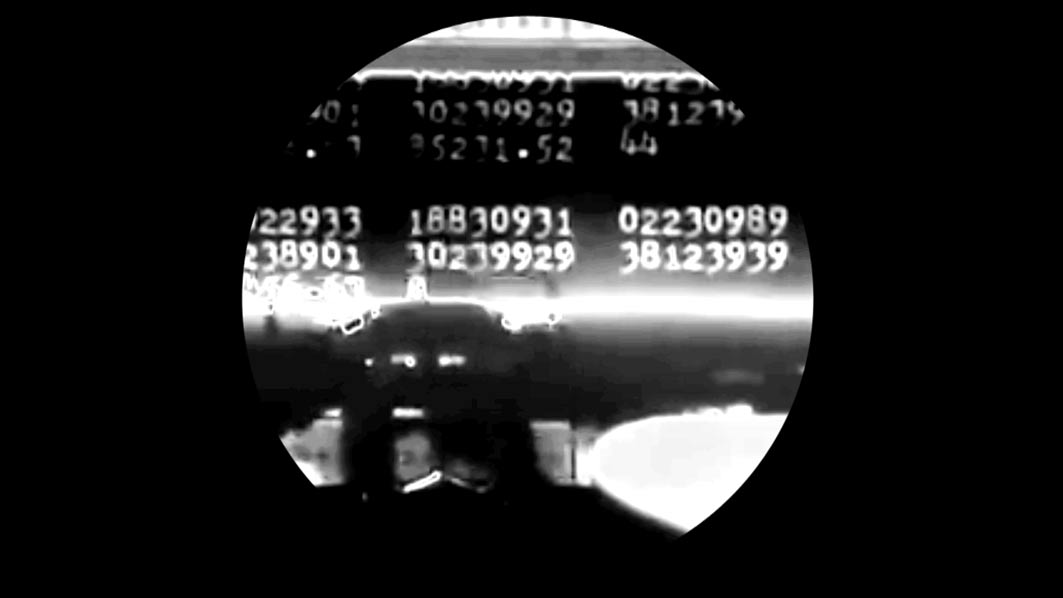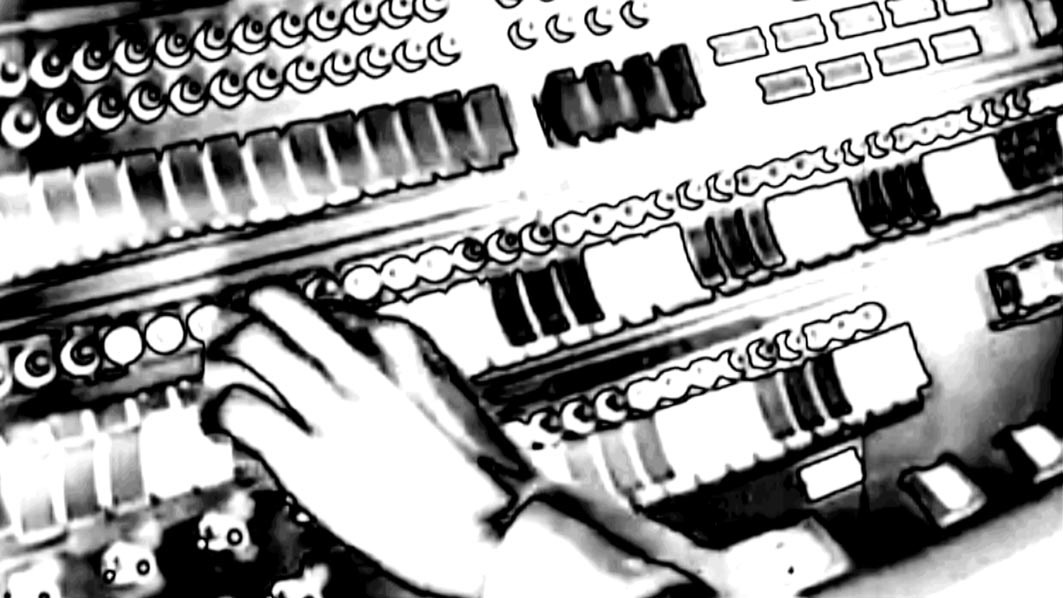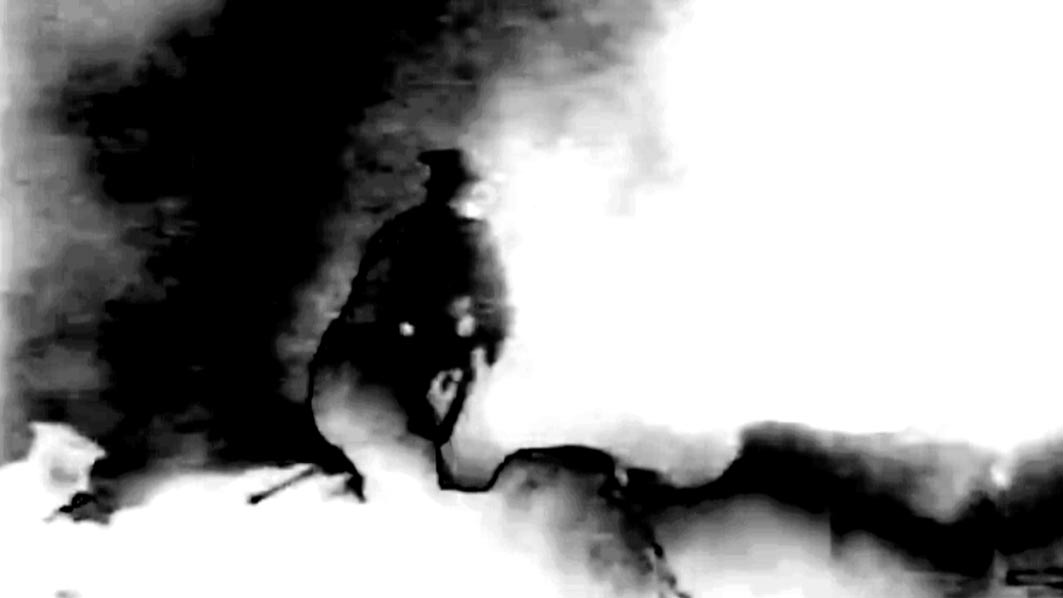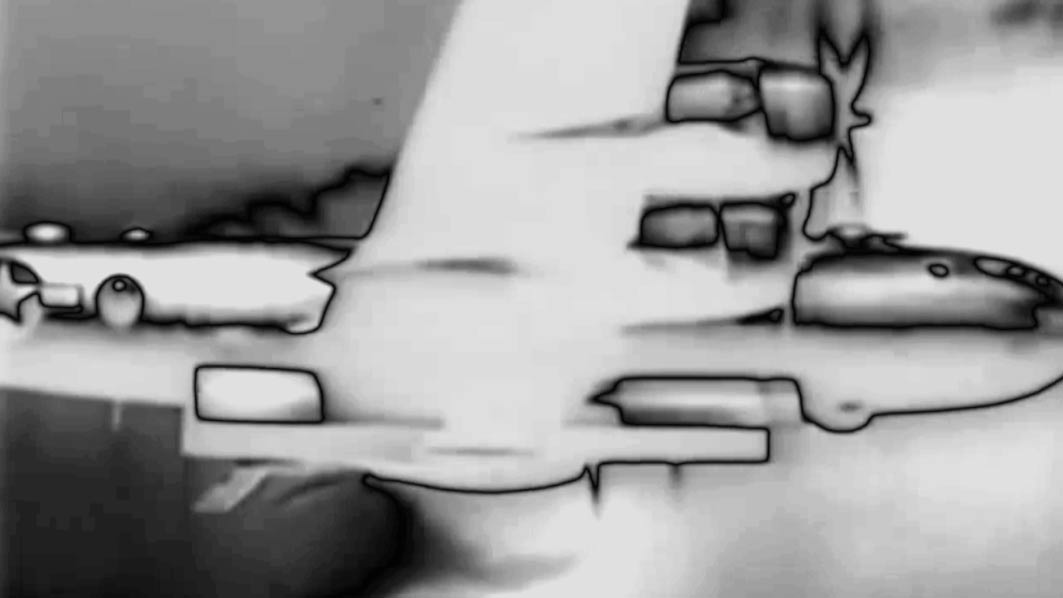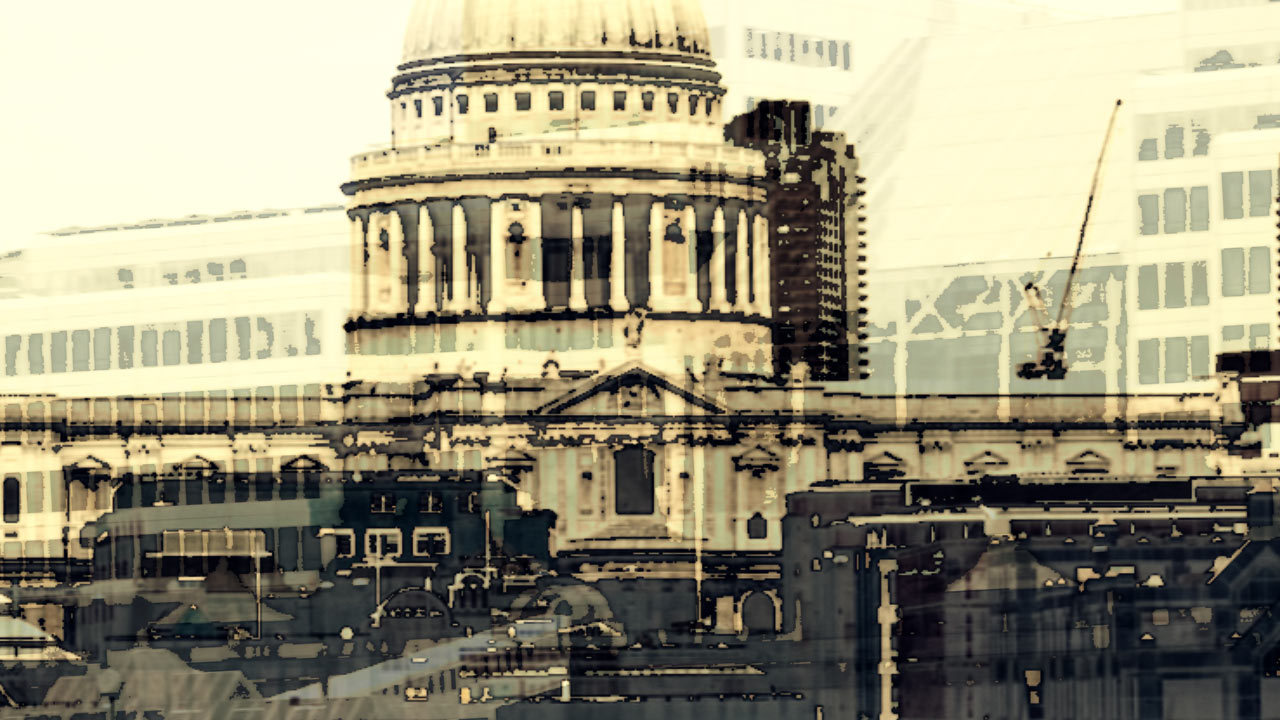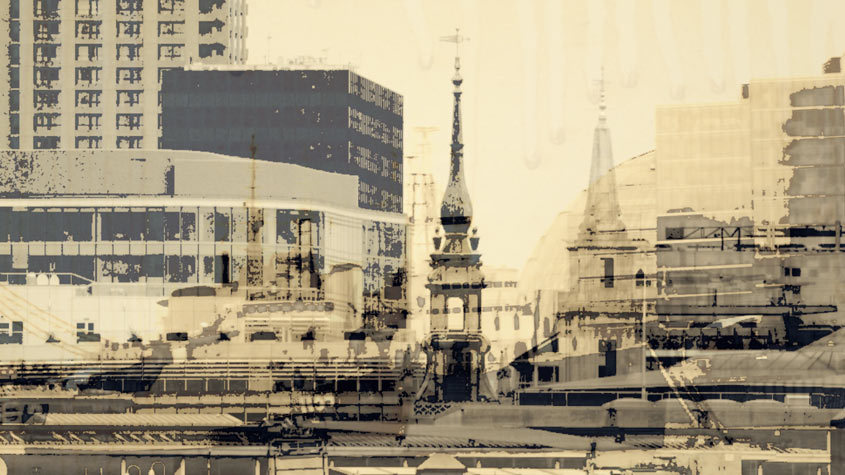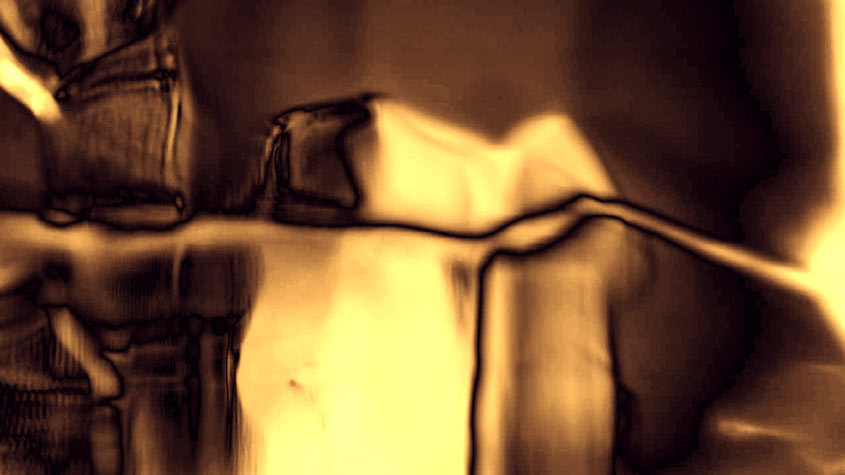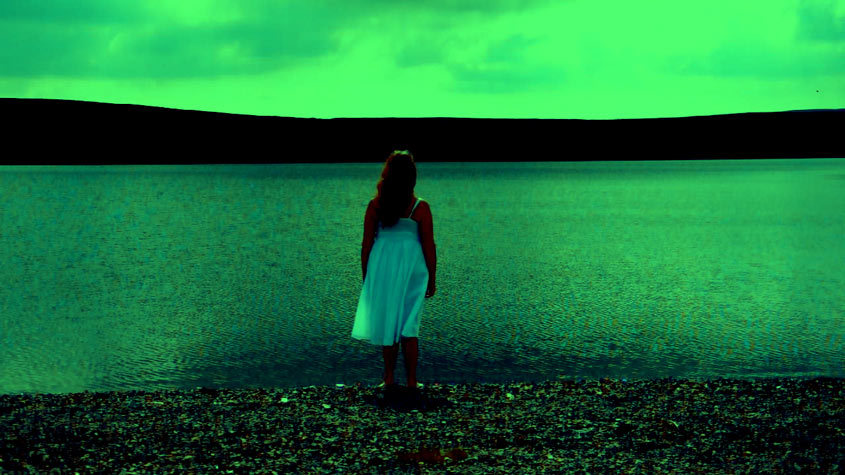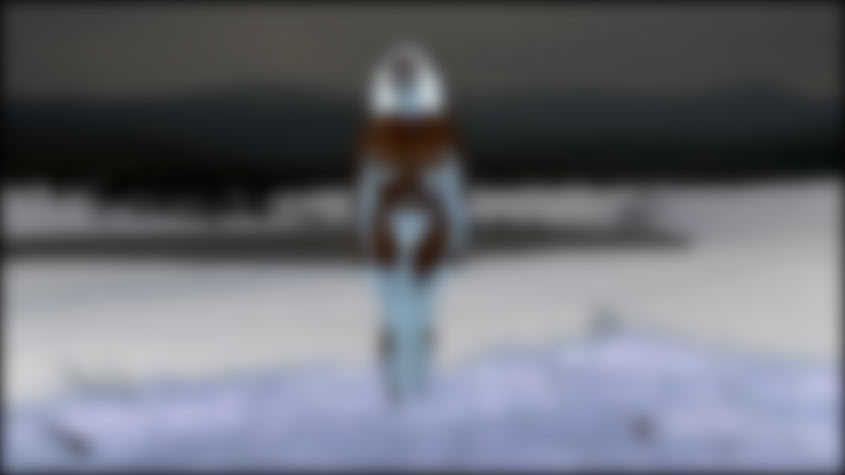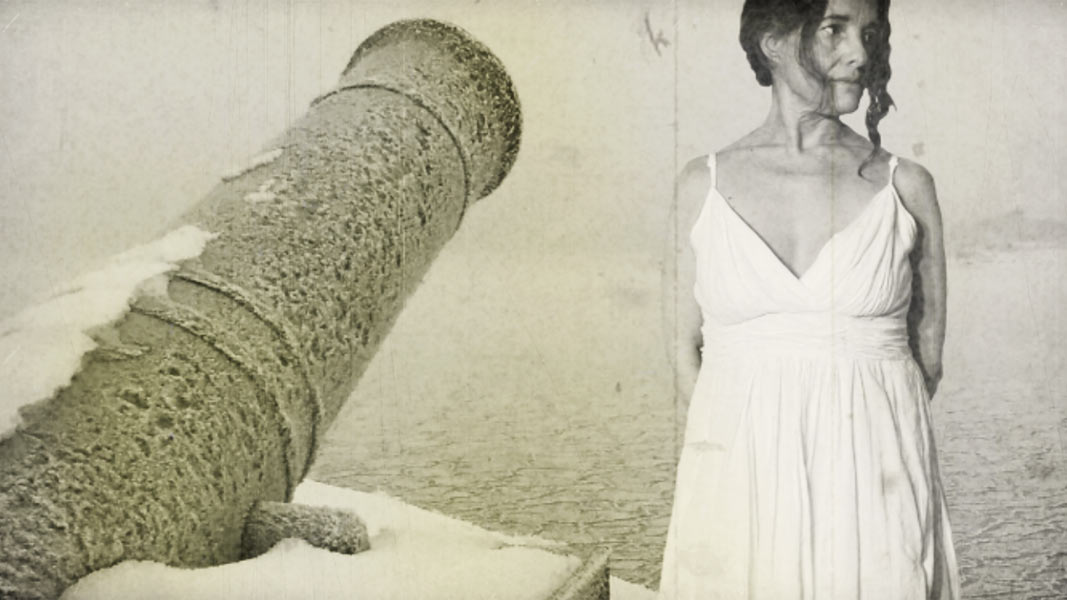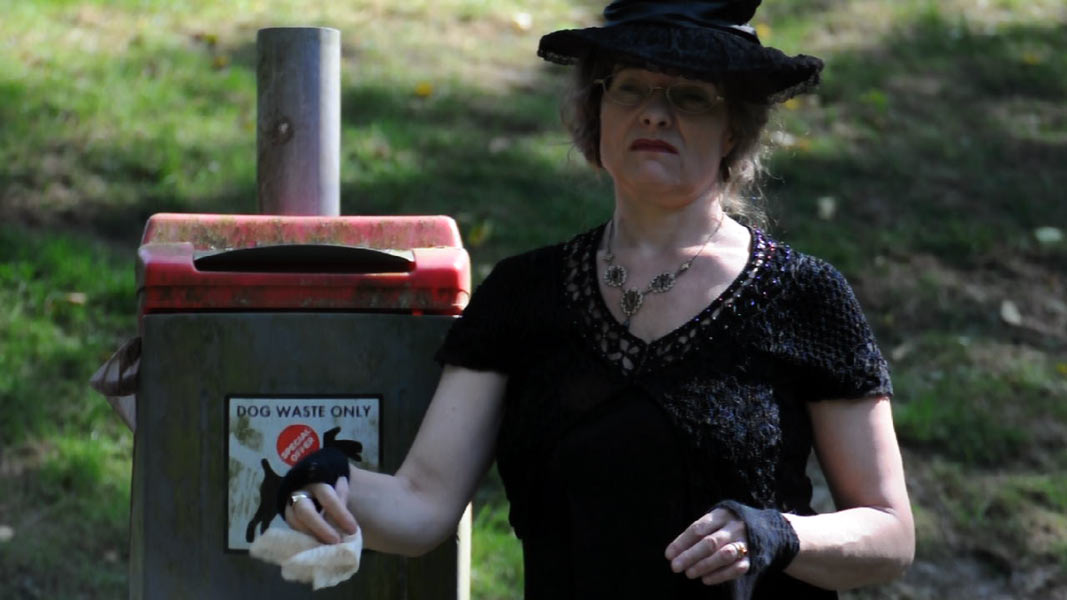ARTIST'S FILMS & SOUND ART
HAIR (2014)
Hair is symbolic of strength and vitality, of freedom, sensuality and physical attraction. One often loses one's hair when illness occurs. This film attempts to express the stress, anger, obsession and frustration of losing one's strength, vitality and personal empowerment. This film uses an excerpt from my own soundtrack "A Long Way to Heaven", a soundscape expressing the stresses of an over mechanised world.
I GOT LIFE (2014)
Warfare defines our life on Earth. The war mongering mentality that gives rise to this regrettable fact pervades all of society and poisons every aspect of the human life experience. There is nowhere to escape from the feeling of being targeted, chased, threatened and hunted down. The unconscious stress reactions that follow aren’t confined to the battle field or the besieged city, but arise everywhere and anywhere throughout our lives. The majority of illnesses are generated by stress, and over time, they are increasingly likely to become chronic. It isn’t just our immediate physical survival that is at stake, it’s also the body’s ability to sustain life in the long term. The mental and emotional repercussions are disastrous and the survival of the authentic self is eventually also at stake. Severe disability may soon become the norm within the framework of society as we know it today.
In the film “I Got Life”, war is presented as a fact as well as a metaphor for a stressful life that has undertones of constant warfare. Life has become a traumatic struggle to manage the invisible forces that manipulate our bodies and mind, and the joy of being alive is gone. Moreover, when humans do break down from the effects of chronic stress, society is quick to jump on more guns to finish off the ones they consider weak and useless. The irony is that it’s often the insensitive and ruthless individuals who are able to withstand stress the best. Are these the people who should lead our world?
“I Got Life” is based on old footage from World War I and World War II, as well as footage of myself as the civilian narrator. The circular shape is indicative of the feeling of being targeted. The black and white, and negative, effect highlights the sense of the fundamental dichotomies in life, as well as the starkness of the emotions. The film has been constructed around a sound collage I made called “A Long Way to Heaven”. It features machine sounds, radio sounds from the Cold War and other war related sounds. I performed the song “I Got Life” from the musical “Hair” from 1967 and added it to the track. It was sung on a day I felt quite ill and tired in the same tempo as the song in the 1979 film version. As it is fast and quite a tongue twister, it makes the performance sound shallow and panicky. Though the song's main function in my film is irony bordering on parody, it's also connected to the Vietnam war. At the time, the musical was a radical criticism of religion and warfare that met with a lot of resistance until entering pop culture for good. By using this highly energised song about the good things in life in the context of stress and war I was hoping to further reinforce the sense of irony and how difficult it is for severely exhausted and ill people to feel that joy of having a body and being alive. Yet this should surely be everyone’s birthright?
Stills from "I Got Life"
THE END IS A NEW BEGINNING (2014)
This film with my own footage accompanies the first piece in my series of music/sound art "Music for Liminal Times". Water is a most primordial symbol of creative potential and it's manifestation, of the unconscious as well as its expression through emotions and intuition. Many cultures have imagined that life started out as a sea without light, not unlike our existence in the womb. As the eternally recurring cycle of death, rebirth and regeneration is contained in this symbol, the footage and how I have presented it, as well as the music, reflects the idea of change and transition to a new state or level of being. Please read more about the music here.
TRILOGY "VISIBLE/INVISIBLE" (2013)
This is a series of films ("Insomnia", "The Title" and "Tides") about various ways in which one can become invisible to oneself and the world at large, as well as exploring what it really means to be visible. At the foreground are some fundamental dichotomies of human life such as cause and effect; imprisonment and freedom; internal and external; sanity and insanity; illness and health; alienation and connection; social convention and personal liberation.
All contents is subject to copyright.
PART III: TIDES
This film expresses the almost unbridgeable gap between a person's claustrophobic subjective experience and their objective reality. The rhythm of life and many of the fundamental dichotomies that define our dual experience of life, are here resolved through the idea of beauty and transience.
“Tides” is the independent final part of the trilogy "Visible/Invisible". Here, the almost unbridgeable gap between a person's subjective experiences and their objective reality comes to the forefront.
Very often, the environment remains unaware of the agony of the inner self and invisible or hidden impairments, but these also often remain hidden because of shame. Shame and distress bring on a desire to cover up and to present a pleasing facade, which also acts as a wall that can be hard to surmount without the help of a compassionate environment. The film aims to raise questions to do with imprisonment inside the body and mind and the dependence on a connection to the environment and other beings. If society is unable to face the totality of an individual’s suffering and help them overcome their shame, then perhaps the answer lies in a personal form of escapology?
The title refers to the idea of the rhythm of life and its contrasts; imprisonment versus freedom, quaint versus dreary, beautiful versus ugly, emptiness versus fullness, connection versus lack of connection, togetherness versus loneliness, pain and illness versus health, sanity versus insanity... inner and outer, claustrophobic and open... in short, many of the fundamental dichotomies that define our dual experience of life. The repetitive music also underlines the rhythmic, cyclic quality and "eternal recurrence" of our experiences and affects. In the end, what remains is the need to let go of the entrapment of conflicting forces so that we are free to continue our journey.
GALLERY - please click on the still images to enlarge
SOUND ART (for Tides)
"The Voice of Pain" is the complete original soundtrack with recordings of sounds of the city, "the external sounds", as well as my own voice, "the inner voice of pain", conceived for the third part of the artist film trilogy "Visible/Invisible". Among other things, the trilogy attempts to express what it means to live with pain and fatigue.
"Ave Maria Remix" is based on a vintage recording of the public domain of Verdi's Ave Maria. It's the other soundtrack for "Tides", The repetitive music underlines the rhythmic, cyclical quality and "eternal return" (or "eternal recurrence") of our experiences and affects.
Part II: THE TITLE
The self that longs for status, dignity, beauty and social acceptance is here contrasted with the bitter truth of deprivation, illness and grief when life disappoints. The emotional journey that carries the narrative speaks of loss, inner acceptance and the restoration of a more honest sense of self.
This is the independent second part of the trilogy "Visible/Invisible.
“The Title” is a deeply personal and emotional video collage about entitlement and how the loss of social status, health and dignity is being resolved. It consists of fragments from the artist's life in the form of moving images, performance, stills, a poem (recited in the original Swedish with English text), and many of her handmade collages. The theme is based on the idea of life as theatre, the quote "All the world's a stage, and all the men and women merely players" (Shakespear) being particularly pertinent in this context. This is a serious, yet also playful, take on the idea of creating your own biopic or moving “selfie”.
The contrasts between the external self that longs for status and acceptance and feels entitled to this, is contrasted with the turmoil of the inner self when things don't work out in accordance with expectations. It's also looking at influences from far back in time. The classical music, which is of personal significance, underpins the sense of the past and its influence on the present moment. The emotional and rather archetypal journey that carries the narrative speaks about loss and restoring a sense of dignity. The title "The title" refers to the idea of being "entitled", either physically (health, money, and other good things in life), or emotionally (having a sense of worth, dignity and spiritual stature).
"I found 'The Title' very captivating and truly artistic at the same time. It made me think profoundly about us as human beings with all our possibilities and limitations. There was a bit of mysticism included in this short film, which made me wish there would be chance to talk with the author and go into depths of issues one day."(Kirsi Salo, senior legal adviser for the Finnish film industry).
Part I: INSOMNIA
This film explores the consequences when a natural ability can no longer be taken for granted and the attempts to control nature are bound to fail. This work focuses on the boundaries between natural and unnatural, abandonment and control, as well as sanity and insanity.
In the independent first part of the trilogy "Visible/Invisible", self becomes objectified through the use of voice art. A subjective experience goes through stages of expression as thoughts become vocalised and then recorded as a token for the direct communication that would never take place in real life. The body gains a semiotic quality through carrying a potent message of distress.
When a person starts panicking about not sleeping, everything is magnified and there's often a kind of terror that becomes a waking nightmare. Most people are unfamiliar with the state where layers of anguish and a distorted sense of reality kick in, as a natural ability can no longer be taken for granted and the attempts to control nature are bound to fail. This realisation is terrifying, and can have extreme consequences on body and mind. This work explores the boundaries between natural and unnatural, abandonment and control, as well as sanity and insanity.
Insomnia is sometimes part of serious health conditions, or one all on its own. The repercussions can be terrible.
"Managing an illness that's happening when you're not looking is like walking a tightrope" (From the description of "The Impossibility of Sleeplessness and Damien Hirst doesn't Exactly Make it Better"). It's a problem that is hard to cure since sleep happens when we're not in control.
TRACES (2012 - 2013)
trailer (click to view)
This independent trailer is based on photographs of the traces humans have left on old Russian goods wagons - a world of texture and mystery. The work aims to lull the viewer into a contemplative, receptive state of mind; it's an exercise in “a fresh look on life” as imperfection becomes a virtue.
This is a trailer by Vivi-Mari Carpelan and music by husband Martin Herbert. This project idea is based on the use of koans in Asian Buddhism and the finished project will feature the artist's own music.
The work aims to disrupt so-called “functional fixedness” in the viewer, breaking old cognitive patterns and helping the brain make new connections. “Mind-wandering” that is neither too focused nor too slack is beneficial to a receptive state of mind, conducive to creative thinking. This is not really meditation, but rather an exercise in “a fresh look on life”.
The gently flowing yet dynamic feel of the multimedia show should lull the viewer into a contemplative state of being. Inspiration has been derived from the ancient Japanese tradition of the koan, a story or statement that is ultimately absurd, offered to Buddhist disciples as a way of breaking old cognitive patterns, i.e. the mental “rut” humans get stuck in. The statements are meant to help the disciples drop their rational minds and become susceptible to the greater mystery of life.
Ideally, we want this shared subjective encounter to inspire people to question the rationale behind the frantic process of dashing about the planet in a state of semi-functionality.
The title references the marks that people have left behind while simply doing their job. Successive layers of paint, repeatedly stencilled or painted signs and lettering and the corrosion express the convergence of cultures, communication as well as the universal concepts of decay, the passing of time and the echo of history -- all of surprising aesthetic value.
My fascination with creativity, the many forms of linguistic expression in different cultures as well as belief systems around the world were at the core of my MA at Helsinki University. This, as well as my very personal and first hand concerns with the psychology and physiology of stress, are all behind this artistic venture.
The complete show with my own music is planned for 2014.
The image gallery can be found here.
FIRST SNOW IN WALES
In this early film, I used a snippet from a song, the haunting "Tro Hatal" by my husband Martin Herbert. (2012)




